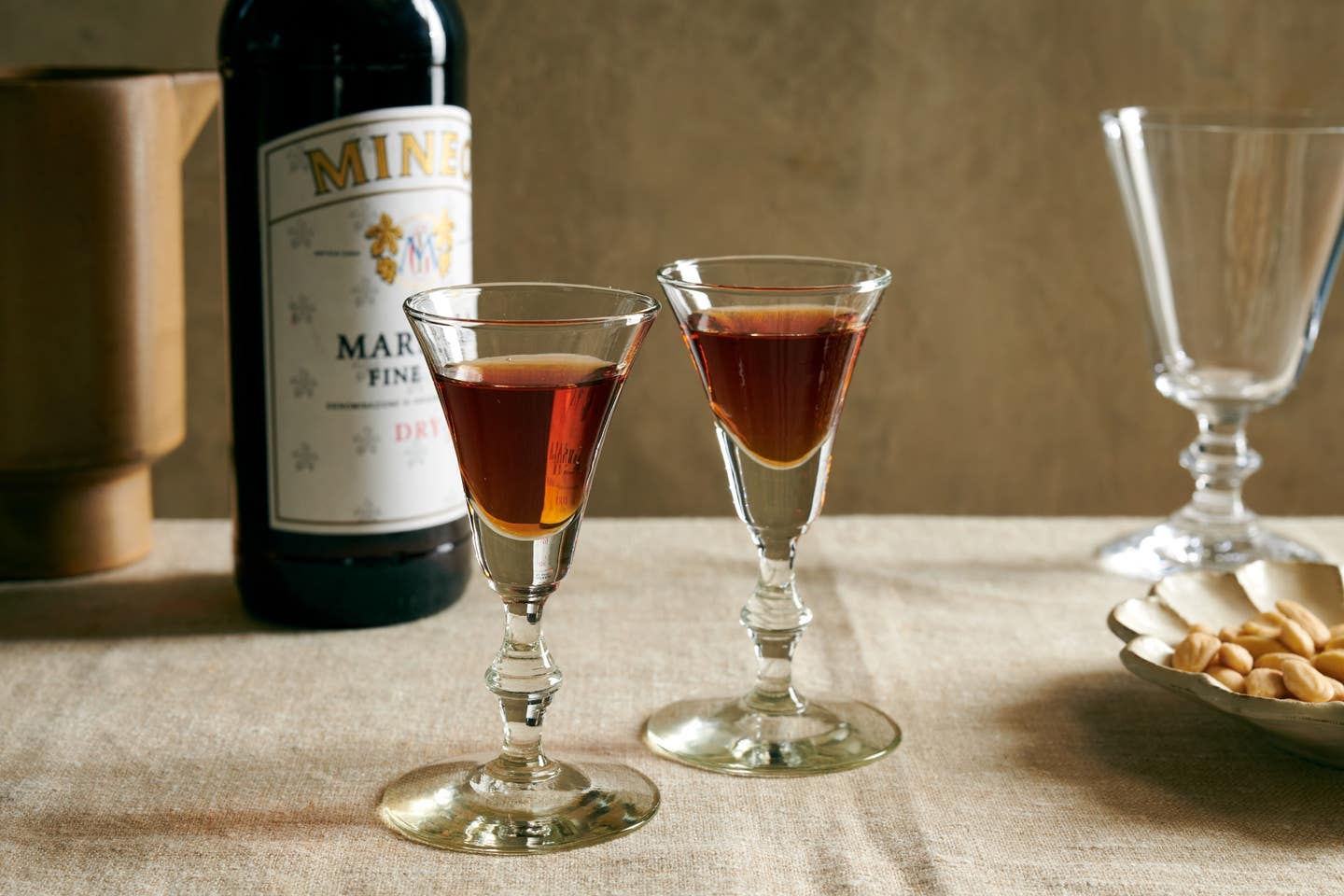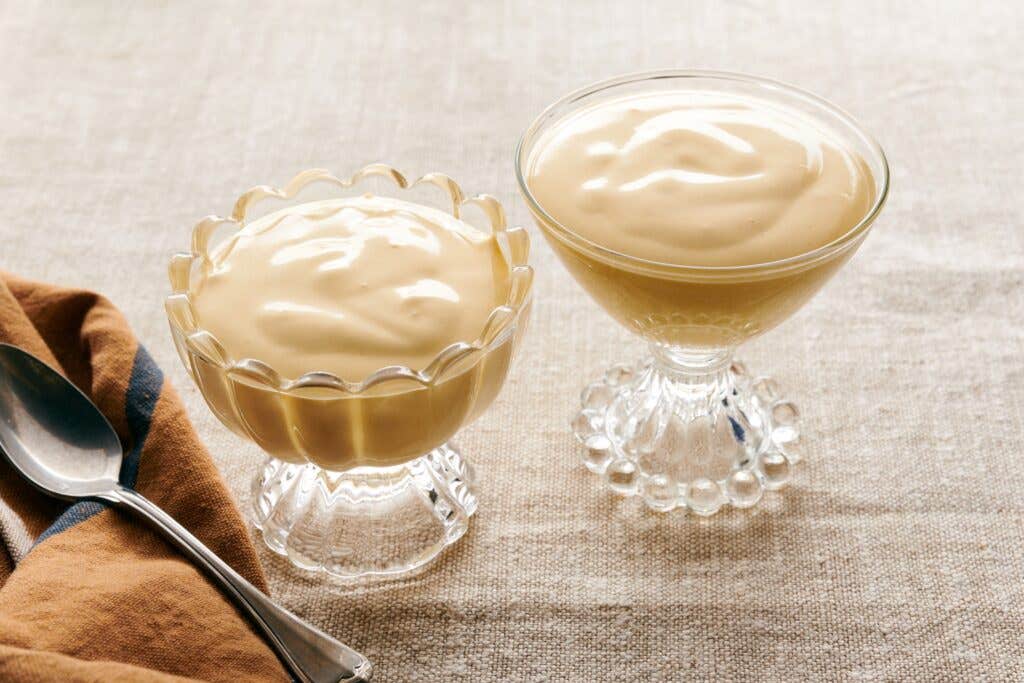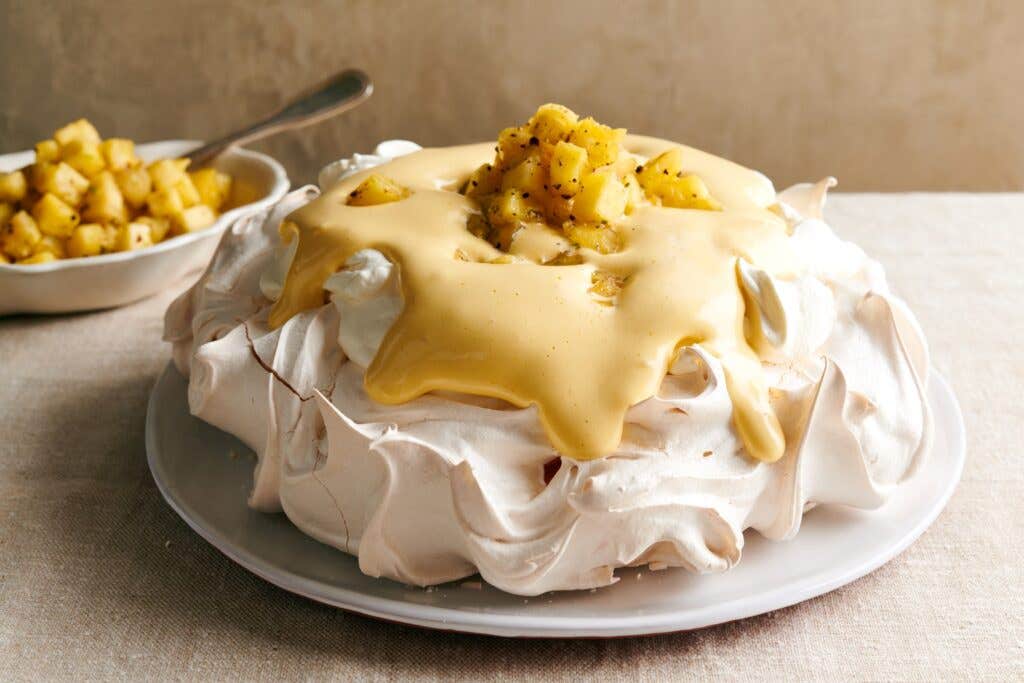
Flavorful and Versatile, Zabaglione Is a Festive Way to Cap Off the Meal
The unfussy “chef’s dessert” comes together in minutes.
Some of the world’s greatest dishes demand a nip of wine or spirits to reach their full potential. Welcome to Splash in the Pan, where writer and drinks expert Tammie Teclemariam teaches you how to bring them to life.
Zabaglione is a true chef’s dessert, a term applied to confections that can be made without much attention to the ratios and techniques that make pastry precise. Things like custards, trifles, and cooked fruit that can be assembled based on one’s knowledge of flavors and cooking with fire on the stove instead of recipes perfected in the oven. Sometimes chef’s desserts are looked down upon as less impressive, but that’s not the case with zabaglione, a foamy, boozy custard, scented with the raisiny fragrance of fortified wine. Even more impressive is that it comes together in 10 minutes on the stove using items that can be found in almost any kitchen.
Also known as sabayon in France, the method is the same no matter what you call it: whisk together egg yolks with equal parts sugar and wine, then cook over a water bath or flame if you are skilled enough, whisking constantly until the liquid mixture turns pale and fluffy and rich enough to hold its shape when you drizzle it.

Traditionally, fortified wine is the liquid of choice because it has the ripe flavor of a sweet wine with enough alcohol to make the flavors stand out in this dessert sauce, but you can also use a dry white wine or Champagne for a lighter effect, though if I’m going that route, I like to fortify the wine myself with a shot of Grand Marnier or brandy to boost the aroma. You can also use strong coffee for an alcohol-free version.
The recipe works with any fortified or dessert wine you have around, like Vin Santo, Moscato, or even a rich Oloroso sherry, but Sicilian Marsala is the classic choice, and an affordable one to boot. While there is very inexpensive Marsala sold in some grocery stores expressly for cooking, a decent bottle of Marsala that you wouldn’t mind drinking isn’t that much more expensive, about $20, and will last in your cupboard for a while, so it’s worth the extra money. Your best bet is to buy it at a trusted wine store. Usually these Marsalas come labeled sweet or dry (dolce and secco in Italian), where sweet versions contain more grape must or juice, but even dry Marsala has a touch of sweetness, so I just buy that so I can use it across savory and sweet applications.
Simultaneously rich, airy, and sweet, zabaglione is the perfect way to end a meal. You can pour it still warm, directly over sliced fresh fruit and serve immediately, or broiled for some added color. My favorite way is to float a layer of zabaglione atop an espresso and dust it with cocoa or cinnamon. You can also cool it over an ice bath while whisking for a minute and then fold it into some whipped cream for a mousse to fill cream puffs or eclairs.
Zabaglione can also be used as a part of desserts like in a tiramisu cream, but since the recipe always leaves you with extra whites, I like to whip them into meringue for a pavlova, which serves as a canvas for the warm zabaglione. When garnished with whipped cream and a bright pineapple salad spiked with crushed pepper and tangy lime zest, it becomes a grand dessert worthy of your swankiest shindig.
Recipe

Keep Reading
Continue to Next Story










